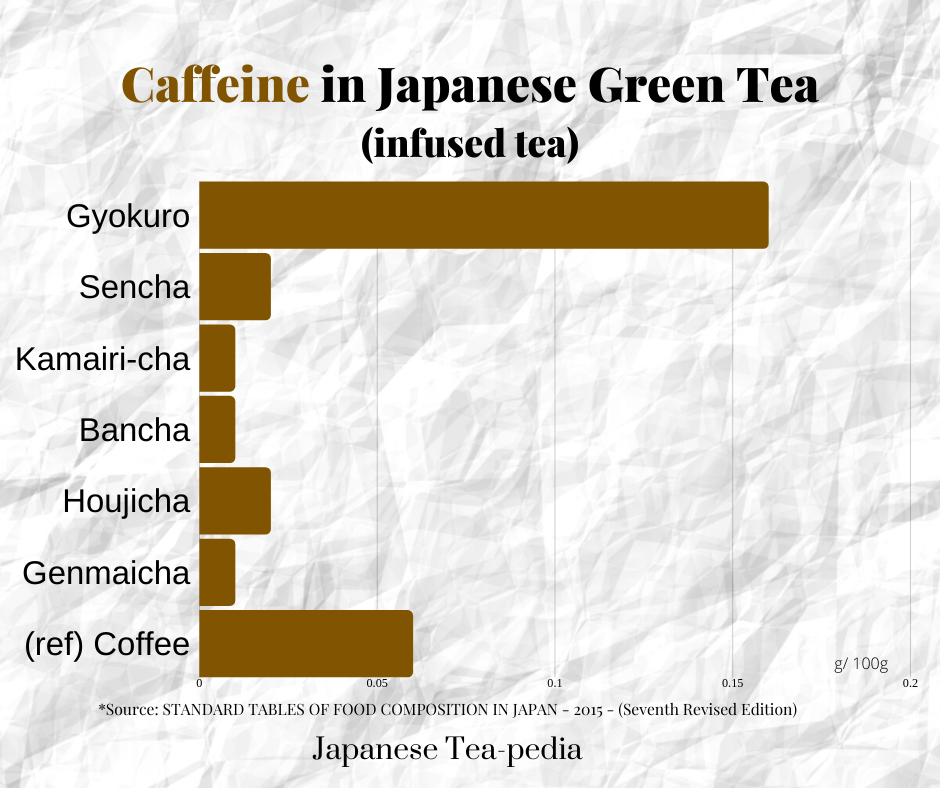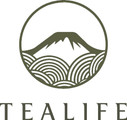The Ultimate Guide to Japanese Gyokuro Tea (2021)
The pinnacle of loose leaf Japanese green tea. Learn everything you need to know about Gyokuro.
This article was last modified November 19th, 2021. by Yuki
Gyokuro is a totally different tea experience!
With an unbelievable thickness and umami, and with a very unique nori-like aroma, it sits atop the Japanese loose leaf green tea world.
We'll cover everything you need to know about Gyokuro in this comprehensive guide!
Contents
Introduction - What's Gyokuro?
It's enjoyed in a completely different way from other teas. The extracted liquor of the tea is intensely thick, and that seemingly jelly-like tea is enjoyed little by little while the powerful umami hit and the seaweed like smell is admired.
It is a very, very different premium tea experience.
A spoon of Gyokuro leaves
The leaves are shaded from the sun, roughly 20 days before harvesting. This stops the Theanine, an amino acid found in tea leaves, from becoming Catechin, allowing the umami and sweet taste to maximize while reducing the astringent taste.
The Taste of Gyokuro
The umami and sweetness level of Gyokuro is the highest of green tea.
If the tea is properly extracted at a optimum water temperature, it will unleash a thick aroma, and a fantastically strong umami.
Don't drink Gyokuro as you would drink normal Sencha - It is enjoyed in a way akin to high quality whisky: not as a thirst quencher, but only little by little, savoring each sip while admiring the deep strong scent.
The first thing you'll notice is the strong Umami hit. It's a full-bodied powerful punch of savory, brothy tasting liquid will "hit" your tongue and sides of your mouth, which will then generate a sweetness afterward.
The scent is distinct and unique - you can almost smell seaweed. In Japanese this scent is called "Ooika" and is produced as a result of shading under the sun. Enjoy it by rolling it on your tongue for a while. It will unleash the aroma to the max.
The Health Benefits of Gyokuro
Perhaps Gyokuro is the healthiest drink when it comes to infused teas.
As a matter of fact, Gyokuro allows you to consume the highest levels of nutrients out of all the infused teas. Take a look at this chart below.

This chart shows that Gyokuro may allow you to consume 3 times or more Catechin and Theanine compared to other types of Japanese tea! This is a stark difference!
Since Gyokuro leaves are shaded from the sun, it contains higher amounts of Theanine and lower amounts of Catechin. This is great for people who are seeking health benefits such as lowering blood pressure, relaxation, and protection of the neuronal cells. The details of the health benefits of Catechin and Theanine are covered here.
How about the caffeine content?

The shading of the sun allows for the caffeine levels to increase as well.
However, as we cover here as well, Theanine helps reduce the effects of Caffeine.
If you want a cup to boost your focus in your studies or work, taking Gyokuro 30 minutes prior will help. It can boost your energy before sports to maximize your performance.
However be careful not to drink too much - the caffeine level is quite high, even compared to coffee!
How best to enjoy Gyokuro?
| Gyokuro | |
|
Servings |
2 servings |
|
Water (ml) |
100 ml |
|
Leaves (g) |
6g |
|
Leaves (roughly in teaspoons) |
3 tsp |
|
Temperature (Celsius) |
50° |
|
Brewing time (Seconds) |
150 seconds |
Chart: Instructions for Brewing Gyokuro
Gyokuro is enjoyed in small sips, little by little.
In official settings, smaller "Kyusu" (hot water pot used for brewing Japanese tea) and small "Chawan" (a cup used for serving Japanese tea) are used when tasting Gyokuro. The key when brewing Gyokuro is to do so slowly in a relatively low temperature.
A cup of Gyokuro
Water temperature and Brewing Time
Take about 3 teaspoons (6g) of leaves for 100 ml of water.
50-60 degrees Celsius is the ideal temperature for the infusion of Gyokuro. Allow it to extract for roughly 2 minutes and 30 seconds - a little longer than you would do other green tea.
Holding the temperature relatively low will reduce the astringent and bitter taste, while extracting the sweetness and umami. Make sure you read the package recommendation on the actual brewing temperature and time, as this will also differ depending on the quality of the Gyokuro.
It is recommended that the water is first boiled so that it reaches 100 degrees. From there, every one to two minutes of wait will lower the temperature by about 5 degrees. Use this calculation to hit the best temperature to make Gyokuro. You can also lower the temperature by adding room temperature water.
Water hardness
Soft water with hardness of between 30 to 80 is said to be the best for extracting the taste and aroma of green tea. The tap water in Singapore is "moderately soft", which makes it perfect for Japanese Tea.
Second Infusion
After enjoying the rich umami and sweetness from the first infusion, there are different options you can take for the second. The most common is to then enjoy the bitterness and astringent taste of the leaves. The second infusion will be prepared by using hot water.
How is it made? (Manufacturing Method)
The Plant
The plant used is Camellia Sinensis, also called "Chanoki" in Japan. This is the same species of plant used for other green tea such as Sencha.
However, in many cases, the breed of the plant may be different. While most green tea would use the Yabukita breed - a plant with a good balance of umami and astringent tastes - many gyokuro plantations would opt for other breeds, such as Saemidori, Okumidori, Asahi, or Yamakai.
Gyokuro leaves. These magnificent leaves are from our Gyokuro Umejirushi from Taniguchien
Shaded during cultivation
Unlike the normal Sencha, Gyokuro leaves are shaded from the sun roughly 20 days prior to harvest.
The shading will block between 70% to 90% of the sunlight, and requires a high level of expertise to manage. There are many variations to the methodology of shading, and the differences in methodologies contribute to the difference in quality and taste.
The most common method is by building structures and covering them in black sheets called "Tana".
Due to this extremely difficult cultivation method, Gyokuro is actually very scarce. A 2004 statistic shows that only 222 tons of Gyokuro was produced in Japan. To put this into perspective, there were 64,900 tons of Sencha produced in Japan that year. This shows why Gyokuro has such a premium price associated to it as well.
The Name of Gyokuro
Most of the names of Japanese tea are suffixed with "cha", which means tea in Japanese.
One of the unique things about Gyokuro is that the name doesn't end in "Cha". So where does this name come from?
Interestingly, the name "Gyokuro" directly translates to "Ball Dew". The leaves of Gyokuro are not round at all, and yet this is what Gyokuro is called.
Although the current Gyokuro leaves are more stick-shaped, the origin of this tea was said to be round.
In 1835, Kahei Yamamoto the Sixth of Yamamotoyama roasted the tea leaves in a round form, and called the product "Gyokuro". In the early Meiji era, this was improved and completed into the current Gyokuro methodology by Uemon Tsujiri of Tsujiri.
Summary
If you enjoyed Japanese tea so far, you've ought to try the highest rank of Japanese green tea in Gyokuro. You can . Please do take a look! Compare it to other green teas - It'll be fun to try the differences and see what you like.
Yuki
Yuki is the Editor-in-Chief AND Community Manager at Tealife. He bleeds Japanese Tea and loves being a part of the Japanese Tea journey of others. Writes, does events, conducts tasting sessions, drinks, drinks and drinks tea! Easily accessible - hit him up on whatsapp (+65) 85882980.
